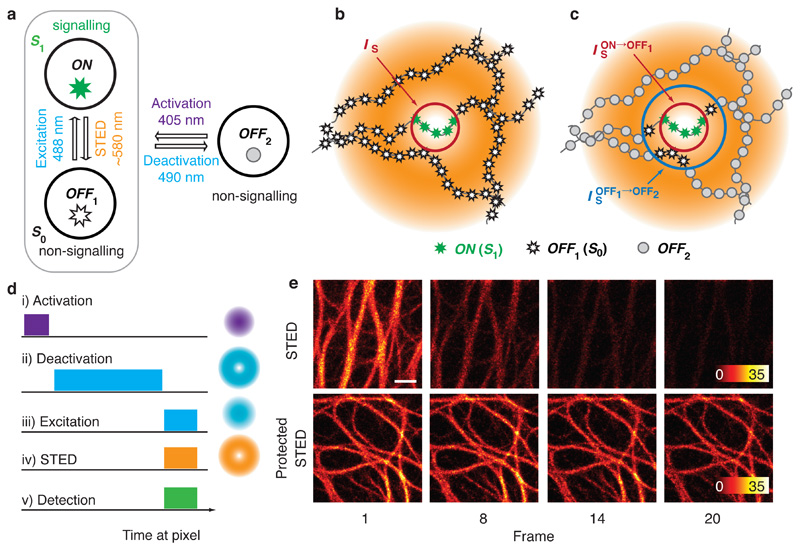Figure 5.
Multiple off-state transitions for nanoscopy: protected STED. a Molecular state diagram for super-resolution imaging with multiple off-state transitions (MOST): In STED microscopy, a single off-transition is utilized to create the state contrast (grey box). In MOST nanoscopy, an additional off-state OFF2 protects fluorophores and enhances state contrast. Wavelengths are exemplary for protected STED with rsEGFP variants. b In conventional STED, only fluorophores near intensity minima, where I < IS, are allowed to fluoresce (green stars). In order to confine this region tightly, molecules away from the minimum (black stars) are exposed to high STED light intensities. c In protected STED mode, molecules are transferred to OFF2 prior to subjecting them to STED (grey circles). is the intensity required to transfer molecules to OFF2. d Sequence of light pulses and fluorescence detection at each scan position for protected STED imaging with corresponding light patterns in the focal plane. e Protected STED increases repeated imaging capability. Image series of living cells expressing keratin-rsEGFP2, imaged with conventional STED (top) and protected STED (bottom) with the same resolution and brightness in the first frame. Scale bar: 1 μm. Adapted from Danzl et al.52.

